Inside the Wild Magic of the Bull Run Pamplona Festival San Fermin (2025 Edition)
Every July, the city of Pamplona in Navarre, Spain, transforms into a vibrant hub of tradition, excitement, and cultural celebration during the Bull Run Pamplona Festival San Fermin. Whether you’re a thrill-seeker or cultural devotee, this week-long festival of Spain delivers adrenaline, tradition, and community celebration. The 2025 edition promises an unforgettable experience filled with adrenaline-pumping events, rich traditions, and festive affinity.
Introduction to the San Fermin Festival
As a travel blogger who’s experienced this madness firsthand, I’m sharing the ultimate 2025 guide about Bull Run Pamplona Festival San Fermin covering: where to stay, how to run safely, budget tips, and ethical alternatives. Whether you’re a daredevil runner or a spectator, this guide ensures you to survive and enjoy the Spain adventure activities.
This guide covers everything from history to helpful safety advice, ensuring your experience is both exciting and informed.
Imagine standing in a narrow Spanish street at sunrise, dressed in white with a red scarf. A rocket fires—BOOM!—and six angry bulls charge toward you at 35 km/h (22 mph). This is the “Running of the Bulls (Encierro)”, the most adrenaline-packed festival in Spain, held every July in Pamplona during the San Fermín Festival.

History Behind the Bull Run Festival
The history of the Running of the Bulls (“Encierro”) goes back to the 14th century when herders drove bulls to markets and arenas. Young men started running before the bulls as a display of courage over time. In 1591, Pamplona started incorporating these cattle drives with the festival of Saint Fermin, the patron saint of Navarra.
why is the san fermin festival celebrated
Saint Fermin was a 3rd-century Christian martyr and the first bishop of Pamplona. His legacy is remembered each year, with processions and masses being held in his name during the festival.
What Makes the Bull Run Pamplona Unique?
The Encierro: A Daily Spectacle
Every day from July 7 through 14, the streets of Pamplona play host to the Encierro at 8:00 AM sharp. Fearless participants race in front of six bulls released to run at full speed down an 875-meter path to the city bullring. This thrilling activity takes only minutes but provides an adrenaline high such as no other.
Each run typically lasts 2-3 minutes but is packed with heart-pounding intensity.
Did You Know?
– The course is just 875 meters (a half-mile) but seems to last an eternity!
– Since 1910, 16+ runners have perished (last fatality in 2009).
– The most perilous place? Estafeta Street, where bulls tend to slip.
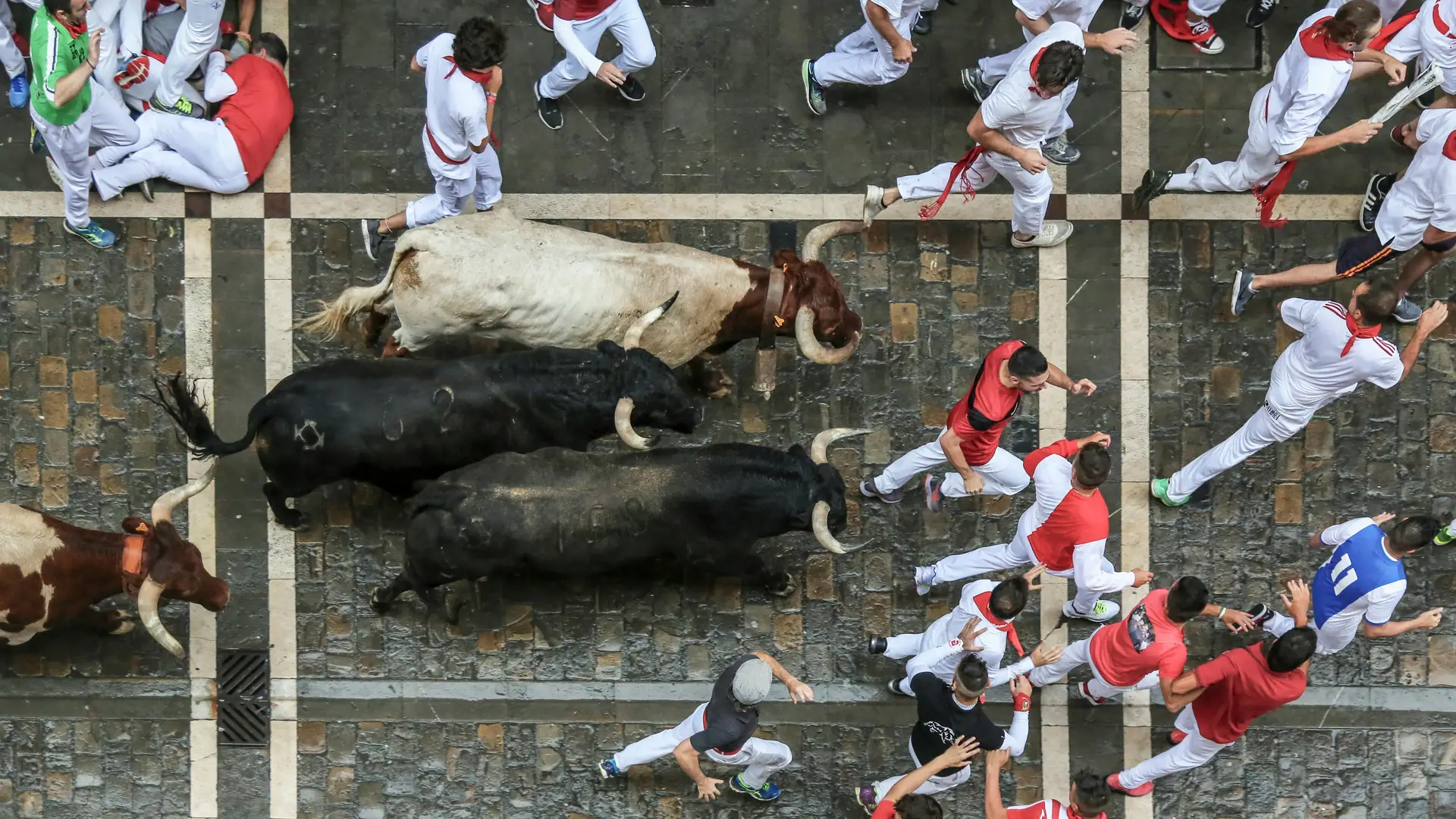
Where does the San Fermin festival take place?
Pamplona: The Heart of Navarre
Nestled in northern Spain, Pamplona is a city steeped in history and tradition. During the festival, its streets come alive with music, dance, and celebration, offering visitors a unique blend of the old and new.
Exact Location & 2025 Dates
– City: Pamplona, Navarre, Spain
– Festival Dates: July 6–14, 2025
– Running of the Bulls: Daily at 8:00 AM (July 7–14)
– Bullring: Plaza de Toros de Pamplona (Final destination)
Schedule of Events: What to Expect
| Date | Event |
| July 6 | Opening Ceremony (Chupinazo) |
| July 7 | First Bull Run, Procession of Saint Fermin |
| July 8-14 | Daily Bull Runs at 8:00 AM |
| July 14 | Candlelight Farewell (Pobre de Mí) |
In addition to these, you’ll find daily concerts, traditional dances, puppet shows, and nighttime parties that go on until dawn.
A Day in the Life of Bul Run Pamplona San Fermin Festival:
The Morning Bull Run
Early mornings have the city’s streets crowded with spectators queuing for the Encierro. Runners prepare themselves physically and mentally for the run while wearing traditional white clothing with red scarves.(San Fermin Travel Central)
Afternoon Festivities and Concerts
Post-run, the city comes alive with numerous activities: street performances, cultural exhibitions, and musical concerts with local as well as global artists. For 2025, some great performances are those of Rozalén, Leire Martínez, and Cali y El Dandee. (Cadena SER)
Evening Fireworks and Street Celebrations
As night approaches, the sky lights up with breathtaking fireworks displays. Streets continue to stay lively with dancing, music, and social get-togethers, depicting the festive atmosphere.
How to Participate in the Pamplona Bull Run:
Runner Profiles
Runners vary from experienced locals to curious visitors. Some run out of tradition, but others are looking for the rush and test the challenge the event offers.
• Be 18+ years old
• Arrive by 6:30 AM to secure a spot
• Wear traditional clothing (white outfit, red scarf)
• Avoid alcohol or drugs
• Stay alert and run in the same direction as the bulls
Pro Tip: Start your run at Calle Santo Domingo if you’re a first-timer — it’s slower and slightly safer.
Top Safety Tips for Runners
1. Stay alert: Do not wear headphones or film yourself whilst running.
2. Know the route: Familiarize yourself with the route and rules. Study the turns, especially Dead Man’s Curve (La Curva).
3. Run forward only: Stopping or turning around is very dangerous.
4. Fall safely: If you fall, then stay down and cover your head until help arrives.
5. Wear proper footwear and avoid loose garments.
6. Obey the police: They are strict for a good reason-your safety.
Despite the precautions, accidents occur. It’s not a game in terms of risk, so only run if you are physically fit and mentally prepared.
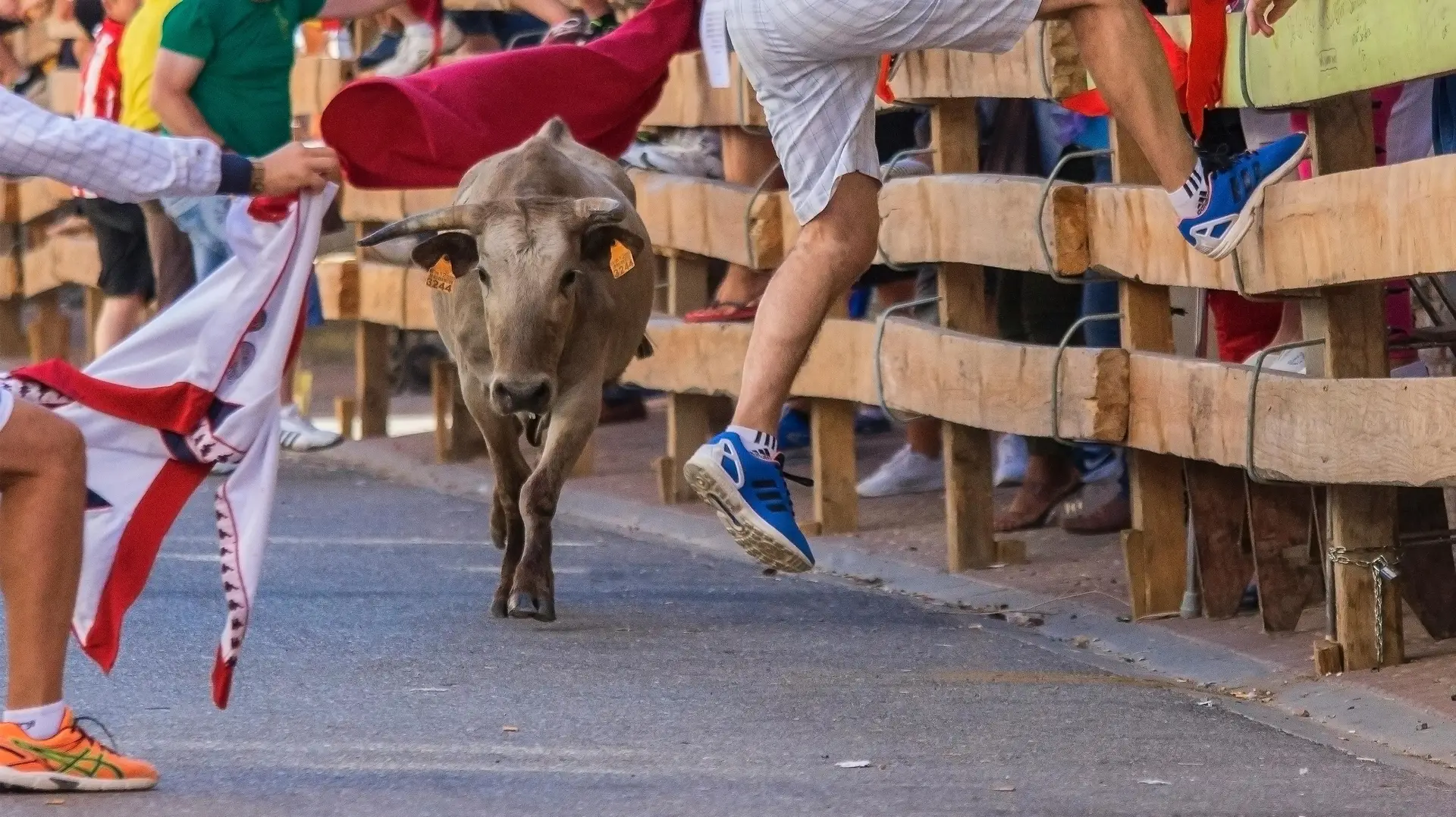
Medical Help During the Run
Medical support teams are positioned along the route and are ready to respond in the event of injury. The usual injuries are bruises, sprains, and occasional gorings.
Attire and Dress Code for Participants
Participants wear traditional white attire with a red scarf and waistband. This gear commemorates Saint Fermin and represents sacrifice and purity.
Symbolism Behind the Colors
• Typically, white: Purity and peace.
• Red: Martyrdom of Saint Fermin.
The Bulls: Breeds, Training, and Myths
The bulls used are of the Spanish Fighting Bull breed, known for their agility, strength, and aggressive nature. They are specifically bred and trained for events like the Encierro.(Spain Traveller)
How Bulls Are Selected and Handled
Bulls are chosen on merit of pedigree as well as character. On the day of the run, all bulls are kept in corrals and released in an orderly manner to ensure security and tradition is maintained.
Best Places to Watch the Bull Run Spain Pamplona
Not a runner? Watching the Encierro can be just as exciting. Popular viewpoint includes:
• Balconies on Calle Estafeta – Book well in advance
• Town Hall Square (Plaza Consistorial) – For the start
• Bullring – Buy tickets for the finish line
• Dead Man’s Corner (La Curva) – Where the bulls tend to crash.
Tip: Be early (5–6 AM) or hire a balcony with local agencies such as Sanfermin.com.
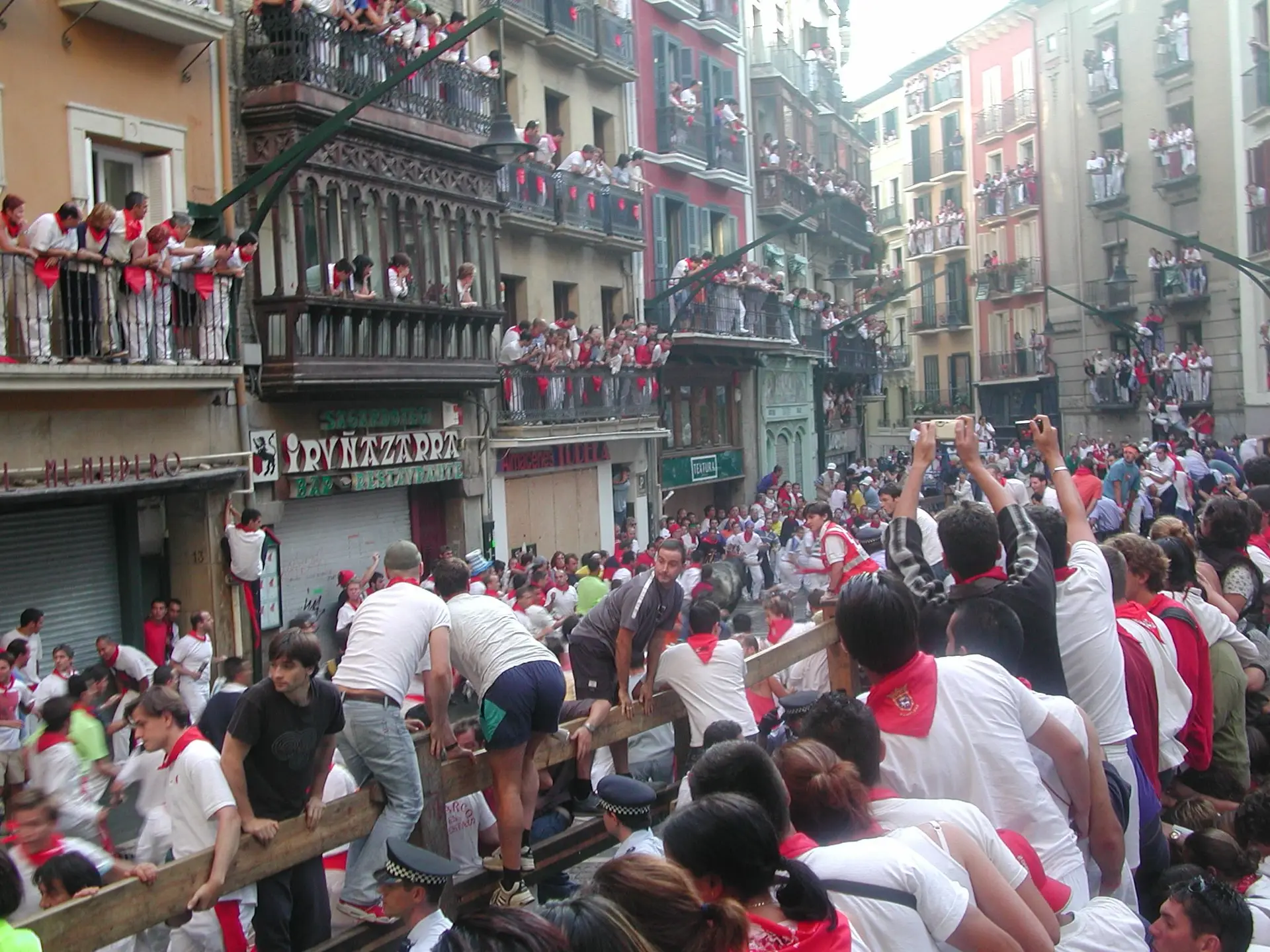
What to Pack for the Festival San Fermin?
Here’s a simple checklist:
- White t-shirt and pants
- Red scarf (pañuelo) and sash
- Running shoes or sneakers
- Sunscreen & hat
- Earplugs (it’s loud!)
- Cash (many places don’t accept cards)
- ID and health insurance
Pamplona Travel Guide for Adventure Travel Spain
How to arrive in Pamplona?
Pamplona is reached by flights, trains, and bus. Advanced bookings are advised because of peak season demand during the festival.
- By air: Closest airports are Pamplona, Bilbao, or Madrid
- By train: RENFE runs between Pamplona and major cities
- By bus: Low-budget travel from Barcelona and Zaragoza
Transportation within the festival is primarily on foot. The old city becomes very congested — bring patience and comfortable walking shoes.
– Best Option: Fly into Madrid/Barcelona, then train/bus.
Train Routes & Prices (2025 Estimates)
Route Duration Price
Madrid → Pamplona 3h 10m €35–€60
Barcelona → Pamplona 4h €40–€70
San Sebastián → Pamplona 1h 30m €15–€25
By Bus (Less Expensive but Longer)
– ALSA Bus from Madrid (5h, €25–€40).
– Blablacar (ride-sharing) – Usually €15–€20.
Driving to Pamplona
– From Madrid: 4h (tolls ~€25).
– From Barcelona: 5h (tolls ~€30).
Accommodation Options in Pamplona
Where to Stay
Accommodations vary from hotels to hostels and rental apartments. Booking early is essential, since spaces get taken up fast.
Lodging gets booked fast, so reserve at least 6–12 months ahead. Your options include:
- Hotels – For location and comfort
- Hostels – Social, budget
- Apartments – Perfect for groups
- Camping areas – Cheapest, but not as comfortable
Check out Booking.com or Airbnb, but confirm cancellation policies in case plans change.
Best hotels in pamplona
Luxury Hotels (€200–€500/night)
- Hotel Palacio Guendulain – 5-star palace with balcony views of the run.
- Gran Hotel La Perla – Hemingway’s favorite, right on the route.
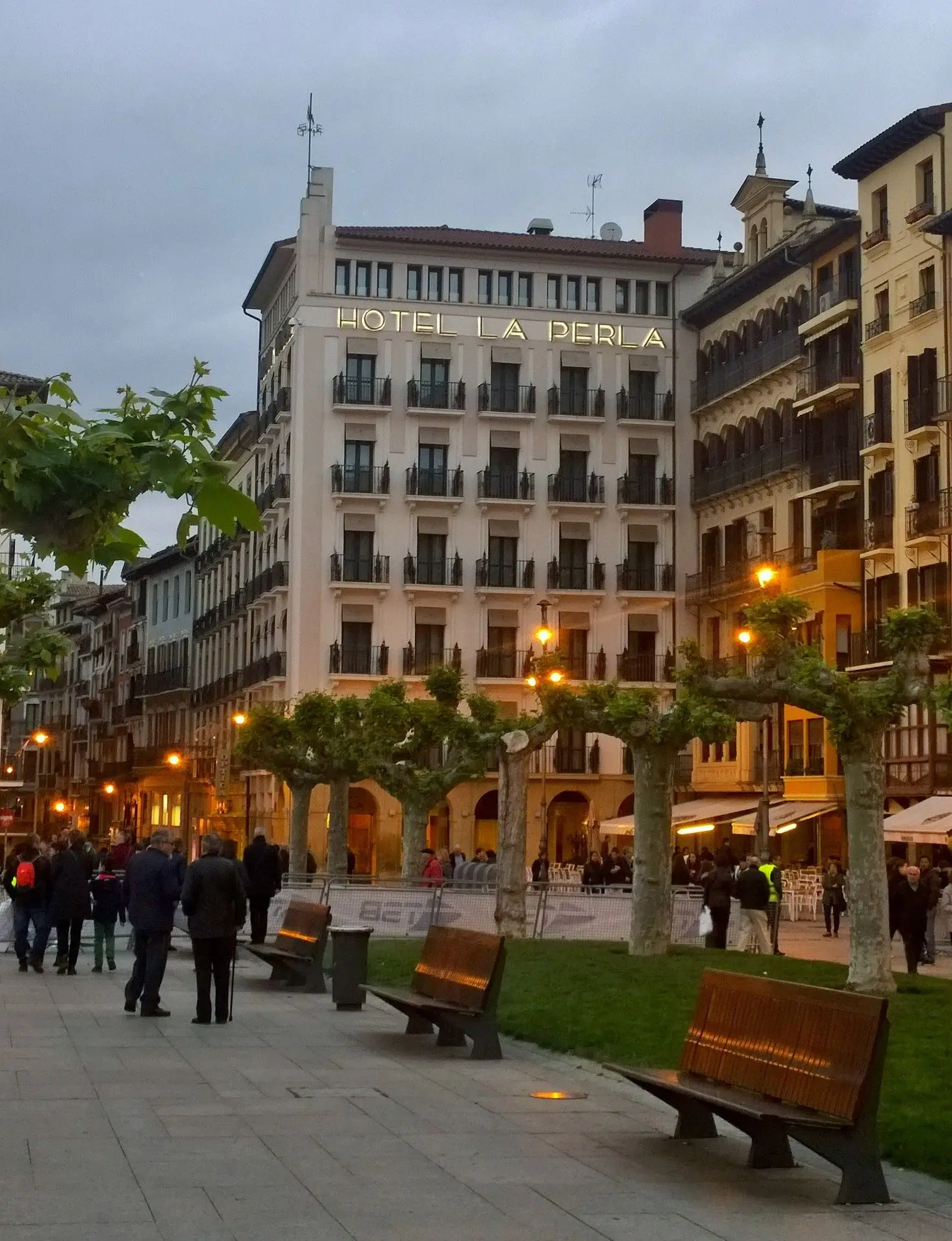
Mid-Range (€80–€150/night)
- Hotel Tres Reyes – Great location near Ciudadela Park.
- NH Pamplona Iruna Park – Modern, 10-min walk to the action.
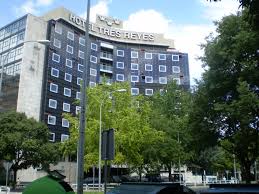
Budget & Hostels (€20–€70/night)
- Aloha Hostel – Solo traveler & backpacker heaven.
- Pensión Otano – Affordable but loud (be prepared for 24/7 parties!).
Alternative Stays
– Airbnbs in surrounding villages (Burlada, Villava – 15-min bus ride).
– Camping Ezcaba (€15/night, 20-min drive).
Food and Drink Culture in Pamplona
Tapas and pintxos can be found in local restaurants. Foods for every taste include chorizo, tortilla española, and jamón ibérico.
Don’t leave Pamplona without sampling:
- Pintxos – Bite-sized tapas
- Txistorra – Spicy sausage
- Churros con chocolate – Sweet and indulgent
- Kalimoxto – Red wine mixed with cola
– Pinchos (Basque tapas) – Try Casa Otano.
– Churros con chocolate – Best at Churrería La Mancha.
– Txistorra sausage – Street food favorite.
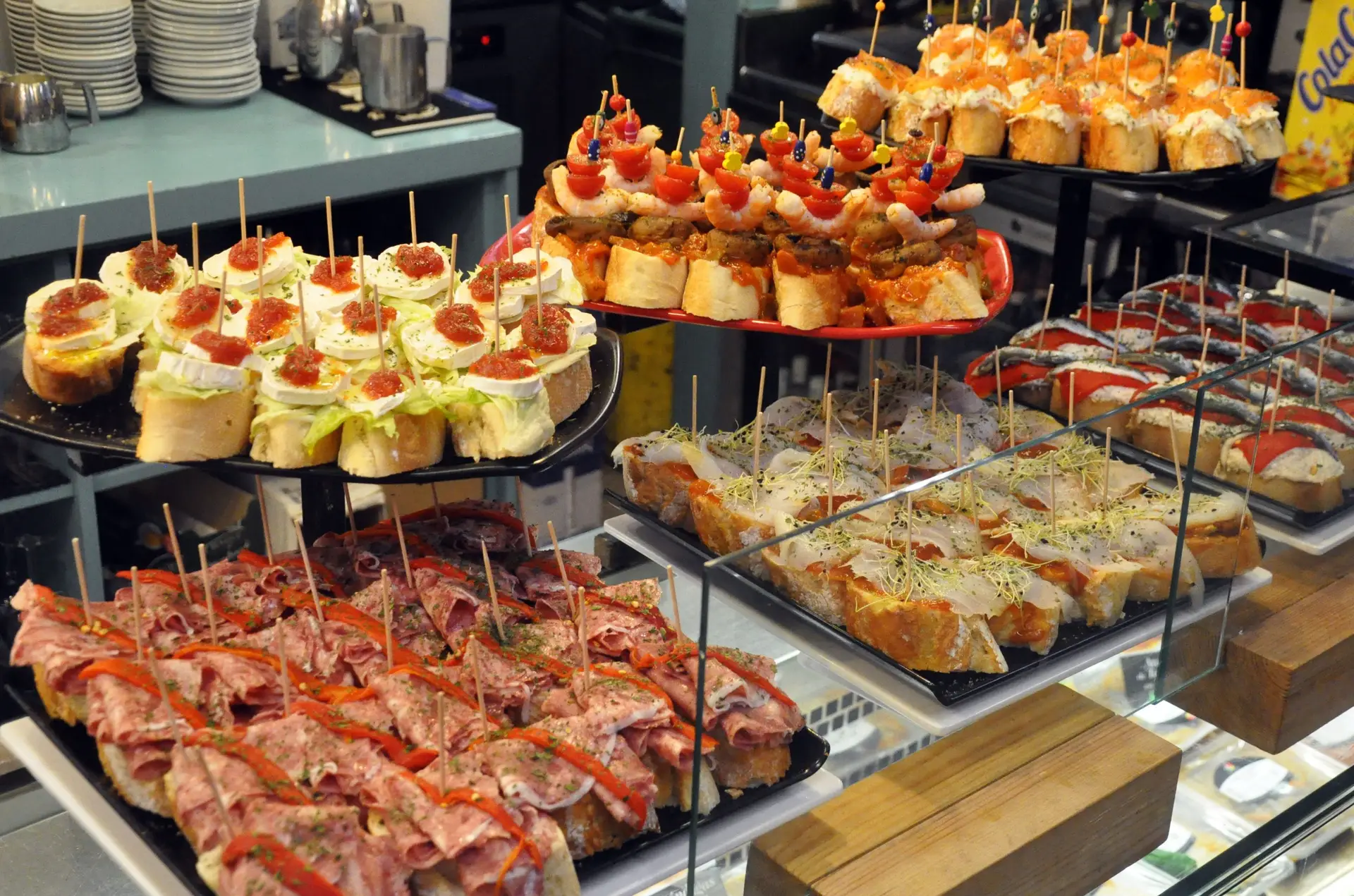
Beers and Popular Local Wines
Wineries in Navarre mainly red wines are paired with the local cuisine. Many festival-goers prefer the beers local to the area. So,
Visit local bars around Calle San Nicolás or Plaza del Castillo.
– Kalimotxo (red wine + Coke) – The festival fuel.
– Pacharán (local blackthorn liqueur).
Nightlife & Parties
– Peñas (Private Clubs) – Wild, members-only parties.
– Calle San Nicolás – Best bars with live music.
Ready for Pamplona 2025?
Book NOW—because hotels sell out fast! And if you’re not running? No shame—balcony views + sangria = perfection.
Other Activities throughout San Fermin Week
Alternatives to Running with the Bulls
Not into running? Try these:
- Join the Giants and Big Heads parade
- Enjoy concerts and fireworks
- Take a guided tour of Pamplona
- Watch traditional Basque sports competitions
Giants Parade
There are giant parades every day, with gigantic figures of various regions and cultures, entertaining people of all ages.
Religious Rituals
Masses and processions celebrate Saint Fermin as a symbol of the festival’s religious origins.
International Shows
There are many stages throughout the city with performances from traditional dances to modern music, as well as performances by international talents.
San Fermin Festival Etiquette
- Respect local customs and religious events
- Don’t treat the bulls as props — they’re respected animals
- Clean up after yourself
- Learn basic Spanish phrases: “¡Viva San Fermín!” and “¡Gora San Fermín!”
Photo & Video Rules at the Festival
Photography is allowed, but:
- Drones are banned
- Selfie sticks are risky and frowned upon
- Flash photography during the run is dangerous
- Ask locals before taking close-ups
For media accreditation, check the official San Fermin website
Ethical Debates and Animal Rights Concerns
Perspectives from Animal Rights Groups
Animal rights organizations have raised concerns about the treatment of bulls during the festival, advocating for more humane practices.
Tradition vs Modern Values
While many defend the festival as a cultural tradition, there’s an ongoing debate balancing heritage with evolving ethical standards.
Famous People and Media Coverage
Hemingway and The Sun Also Rises
Ernest Hemingway’s novel brought international attention to the festival, cementing its place in global culture.
Modern Media and Social Platforms
Today, the festival is widely covered across media platforms, with live broadcasts, social media updates, and documentaries capturing its essence.
Common Misconceptions About the Bull Run
- “It’s just a party” – It’s a deeply rooted cultural and religious event
- “Only locals run” – Many international runners join each year
- “It’s safe with so many people” – It’s still a high-risk activity
- “You have to run the whole thing” – You can run a portion
Frequently Asked Questions (FAQs) regarding the Bull Run Pamplona Festival San Fermin
-
When is the San Fermin Festival held?
The festival is held every year from July 6 to July 14. The Bull Run (Encierro) is held every morning at 8:00 AM from the 7th to the 14th of July. The festival officially begins with the Chupinazo (rocket launch) at midday on July 6.
-
Is it safe to take part in the Bull Run Pamplona?
Although tough safety measures are being taken, the Bull Run is dangerous by nature. Participants must be physically fit, above 18 years of age, and not consume alcohol. Also familiarizing oneself with the route and heeding instructions can help minimize risks.
-
How to participate in Bull Run Pamplona Festival San Fermin?
No advance registration is necessary, but runners should abide by local regulations and be physically conditioned. Marshals oversee the event, and participants who disregard the code of safety can be expelled or fined.
-
Is Pamplona Bull Run safe for tourists?
Yes, organized viewing areas and personal balconies provide safe vantage points. Estafeta Street and Dead Man’s Corner are favorite viewing locations. It is advisable to book balconies early for optimal viewing.
-
What do I dress up as for the San Fermin Festival?
Traditional dress consists of a white shirt and trousers with a red scarf and waistband, as this attire pays tribute to Saint Fermin and is both worn by participants and festival fans.
-
Can women participate in Bull Run Festival in Spain?
Yes. The event is not gender-specific.
-
How much does it cost to go to festival San Fermin?
The festival is free. But accommodation and optional activities (such as bullfights) are the only things that cost.
-
What’s the best age to go to the San Fermin festival?
Although accessible for all ages, 20–40 is the typical group for runners.
-
Can I bring children to the Bull Run Pamplona festival?
Yes, but steer clear of populous areas such as the run route. There are plenty of family-friendly activities on daily basis.
Conclusion: Why the San Fermin Festival Is Worth It
The Bull Run Pamplona Festival San Fermin is not merely running down the streets with bulls—Infact it’s a living, breathing tradition that reflects the spirit, culture, and determination of the Navarrese people. Whether you’re running, watching, or just a curious visitor, San Fermin 2025 promises an experience packed with adrenaline, heritage, and memories that last a lifetime.

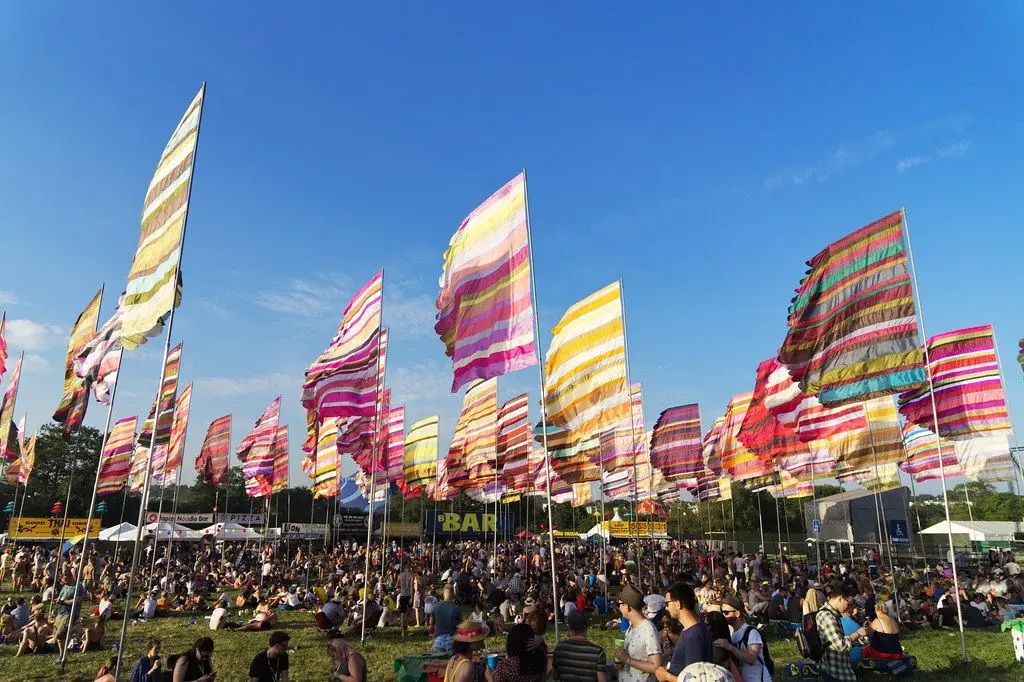
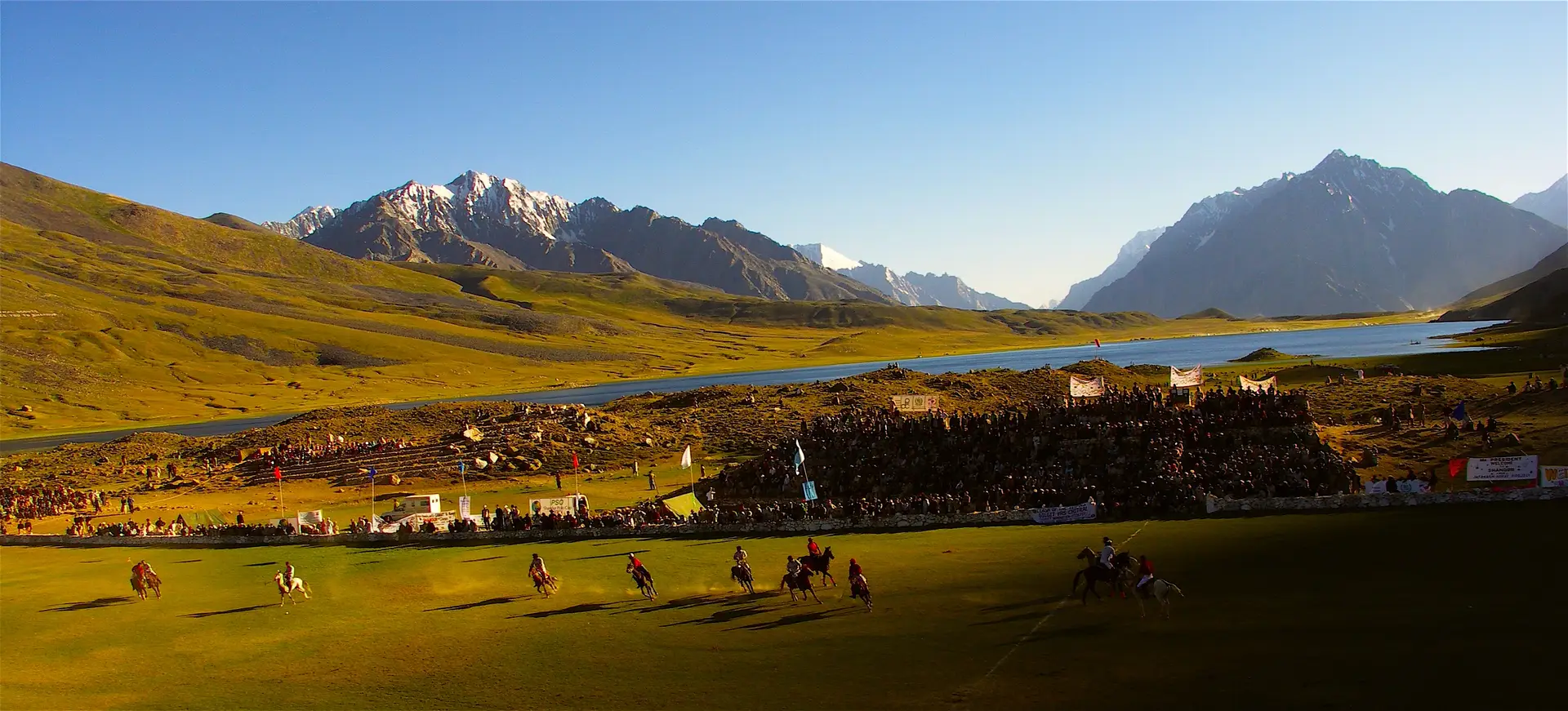
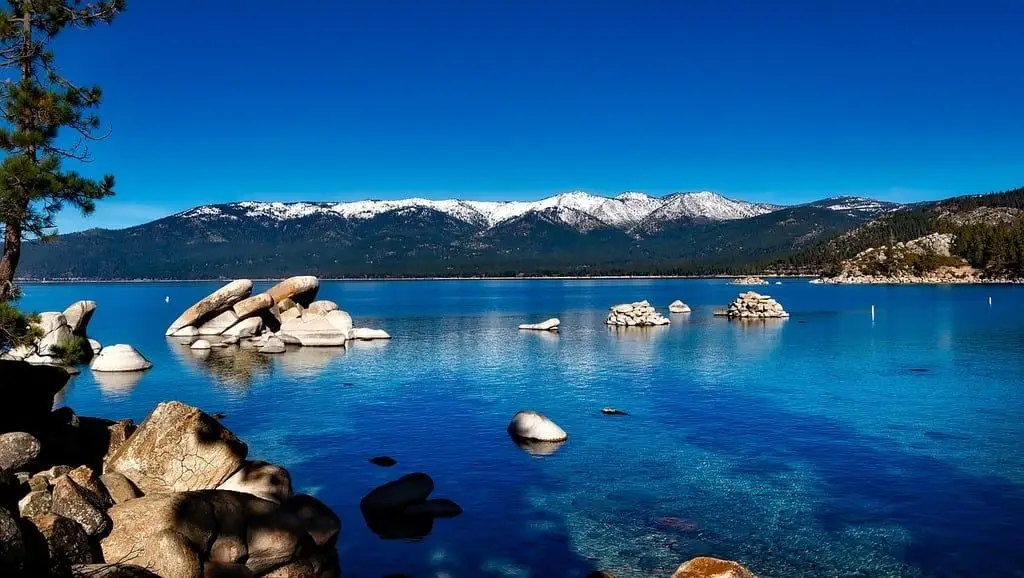


Well-researched and informative article! Love the insights and perspectives shared here👍👍